Quantitative Complexity Theory (QCT) in Integrative Analysis of Cardiovascular Hemodynamic Response to Posture Change
Abstract
1. Introduction
2. Materials and Methods
2.1. Participants
2.2. Head-Up Tilt Testing (HUTT)
2.3. Hemodynamic Assessment
2.4. Quantitative Complexity Theory (QCT)
3. Results
4. Discussion
5. Conclusions
Author Contributions
Funding
Institutional Review Board Statement
Informed Consent Statement
Data Availability Statement
Acknowledgments
Conflicts of Interest
References
- Ewing, D.J.; Martyn, C.N.; Young, R.J.; Clarke, B.F. The value of cardiovascular autonomic function tests: 10 years’ experience in diabetes. Diabetes Care 1985, 8, 491–498. [Google Scholar] [CrossRef] [PubMed]
- Dudek, D.; Banasiak, W.; Braksator, W. Recommendations on the use of innovative medical technologies in cardiology and cardiac surgery and solutions leading to increased availability for Polish patients. Cardiol. J. 2009, 26, 114–129. [Google Scholar] [CrossRef] [PubMed]
- Koźluk, E.; Cybulski, G.; Piątkowska, A.; Zastawna, I.; Niewiadomski, W.; Strasz, A.; Gąsiorowska, A.; Kempa, M.; Kozłowski, D.; Opolski, G. Early hemodynamic response to the tilt test in patients with syncope. Arch. Med. Sci. 2014, 10, 1078–1085. [Google Scholar] [CrossRef] [PubMed]
- Krzesiński, P.; Gielerak, G.; Kowal, J. Impedance cardiography—A modern tool for monitoring therapy of cardiovascular diseases. Kardiol. Pol. 2009, 67, 65–71. [Google Scholar] [PubMed]
- Berntson, G.G.; Thomas Bigger, J., Jr.; Eckberg, D.L.; Grossman, P.; Kaufmann, P.G.; Malik, M.; Nagaraja, H.N.; Porges, S.W.; Saul, J.P.; Stone, P.H.; et al. Heart rate variability: Origins, methods, and interpretive caveats. Psychophysiology 1997, 34, 623–648. [Google Scholar] [CrossRef] [PubMed]
- Højgaard, M.V.; Holstein-Rathlou, N.H.; Agner, E.; Kanters, J.K. Reproducibility of heart rate variability, blood pressure variability and baroreceptor sensitivityduring rest and head-up tilt. Blood Press Monit. 2005, 10, 19–24. [Google Scholar] [CrossRef] [PubMed]
- Lin, C.H.; Yen, C.C.; Hsu, Y.T. Baroreceptor Sensitivity Predicts Functional Outcome and Complications after Acute Ischemic Stroke. J. Clin. Med. 2019, 8, 300. [Google Scholar] [CrossRef] [PubMed]
- Singh, D.; Vinod, K.; Saxena, S.C.; Deepak, K.K. Spectral evaluation of aging effects on blood pressure and heart rate variations in healthy subjects. J. Med. Eng. Technol. 2006, 30, 145–150. [Google Scholar] [CrossRef]
- Lim, E.; Chan, G.S.H.; Dokos, S.; Ng, S.C.; Latif, L.A.; Vandenberghe, S.; Karunanithi, M.; Lovell, N.H. A Cardiovascular Mathematical Model of Graded Head-Up Tilt. PLoS ONE 2013, 8, e77357. [Google Scholar] [CrossRef]
- Park, D.; Lee, M.; Park, S.E.; Seong, J.K.; Youn, I. Determination of Optimal Heart Rate Variability Features Based on SVM-Recursive Feature Elimination for Cumulative Stress Monitoring Using ECG Sensor. Sensors 2018, 18, 2387. [Google Scholar] [CrossRef]
- Marczyk, J. A New Theory of Risk and Rating; Editrice Uniservice: Trento, Italy, 2009. [Google Scholar]
- Batchinsky, A.; Baker, W.; Isbell, C.; Necsoiu, C.; Walker, K.; Marczyk, J.; Salinas, J.; Cancio, L. Real-Time Calculation of System-Level Complexity during Trauma/Hemorrhage: Can We do It? American Heart Association Annual Meeting. Available online: https://apps.dtic.mil/dtic/tr/fulltext/u2/a619207.pdf (accessed on 12 March 2022).
- Batchinsky, A.I.; Desphande, B.R.; Williams, J.B.; Baker, W.; Walker, K.; Marczyk, J.; White, C.E.; Salinas, J.; Cancio, L.C. Changes in Systems-level Complexity Precede Deterioration in Traditional Vital Signs in Hypoxic Cardiac Arrest. American Heart Association Annual Meeting. Available online: http://www.ontomed.net/s/usa_isr_poster.pdf (accessed on 12 March 2022).
- Marczyk, J. Complexity and Resilience Rating: New Paradigms in Finance, Economics and Sustainable Investment; Edizioni del Faro: Trento, Italy, 2015. [Google Scholar]
- Molon, G.; Solimene, F.; Melissano, D.; Curnis, A.; Belotti, G.; Marrazzo, N.; Marczyk, J.; Accardi, F.; Raciti, G.; Zecchi, P. Baseline heart rate variability predicts clinical events in heart failure patients implanted with cardiac resynchronization therapy: Validation by means of related complexity index. Ann. Noninvasive Electrocardiol. 2010, 15, 301–317. [Google Scholar] [CrossRef]
- Molon, G.; Marczyk, J.; Virzi, G.; Accardi, F.; Costa, A.; Barbieri, E. ECG Predicts Response to Cardiac Resynchronization Therapy. Assessment by Means of Complexity Index. 44-th National Italian Cardiology Congress, Florence. Available online: http://www.ontomed.net/s/iccai2013_jcrc-1.pdf (accessed on 12 March 2022).
- Krzesiński, P.; Marczyk, J.; Wolszczak, B.; Gielerak, G. Quantitative Complexity Theory Used in the Prediction of Head-Up Tilt Testing Outcome. Cardiol. Res. Pract. 2021, 23, 8882498. [Google Scholar] [CrossRef]
- Bartoletti, A.; Alboni, P.; Ammirati, F.; Brignole, M.; Del Rosso, A.; Foglia Manzillo, G.; Menozzi, C.; Raviele, A.; Sutton, R. ‘The Italian Protocol’: A simplified head-up tilt testing potentiated with oral nitroglycerin to assess patients with unexplained syncope. Europace 2000, 2, 339–342. [Google Scholar] [CrossRef]
- Bernstein, D.P.; Lemmens, H.J. Stroke volume equation for impedance cardiography. Med. Biol. Eng. Comput. 2005, 43, 443–450. [Google Scholar] [CrossRef]
- Brignole, M.; Menozzi, C.; Del Rosso, A.; Costa, S.; Gaggioli, G.; Bottoni, N.A.; Bartoli, P.; Sutton, R. New classification of haemodynamics of vasovagal syncope: Beyond the VASIS classification. Analysis of the pre-syncopal phase of the tilt test without and with nitroglycerin challenge. Vasovagal Syncope International Study. Europace 2000, 2, 66–76. [Google Scholar] [CrossRef]
- Buszko, K.; Piątkowska, A.; Koźluk, E.; Fabiszak, T.; Opolski, G. Entropy Measures in Analysis of Head up Tilt Test Outcome for Diagnosing Vasovagal Syncope. Entropy 2018, 20, 976. [Google Scholar] [CrossRef]
- Schang, D.; Feuilloy, M.; Plantier, G.; Fortrat, J.O.; Nicolas, P. Early prediction of unexplained syncope by support vector machines. Physiol. Meas. 2007, 28, 185–197. [Google Scholar] [CrossRef] [PubMed]
- Mereu, R.; De Barbieri, G.; Perrone, T.; Mugellini, A.; Di Toro, A.; Bernardi, L. Heart rate/blood pressure ratio as predictor of neuromediated syncope. Int. J. Cardiol. 2013, 167, 1170–1175. [Google Scholar] [CrossRef] [PubMed]
- Hussain, S.; Raza, Z.; Giacomini, G.; Goswami, N. Support Vector Machine-Based Classification of Vasovagal Syncope Using Head-Up Tilt Test. Biology 2021, 10, 1029. [Google Scholar] [CrossRef]
- Fu, Q.; Verheyden, B.; Wieling, W.; Levine, B.D. Cardiac output and sympathetic vasoconstrictor responses during upright tilt to presyncope in healthy humans. J. Physiol. 2012, 590, 1839–1848. [Google Scholar] [CrossRef] [PubMed]
- Morbiducci, U.; Gallo, D.; Massai, D.; Consolo, F.; Ponzini, R.; Antiga, L.; Bignardi, C.; Deriu, M.A.; Redaelli, A. Outflow conditions for image-based hemodynamic models of the carotid bifurcation: Implications for indicators of abnormal flow. J. Biomech. Eng. 2010, 132, 091005. [Google Scholar] [CrossRef] [PubMed]
- Goubergrits, L.; Mevert, R.; Yevtushenko, P.; Schaller, J.; Kertzscher, U.; Meier, S.; Schubert, S.; Riesenkampff, E.; Kuehne, T. The impact of MRI-based inflow for the hemodynamic evaluation of aortic coarctation. Ann. Biomed Eng. 2013, 41, 2575–2587. [Google Scholar] [CrossRef] [PubMed]
- Antonuccio, M.N.; Mariotti, A.; Fanni, B.M.; Capellini, K.; Capelli, C.; Sauvage, E.; Celi, S. Effects of Uncertainty of Outlet Boundary Conditions in a Patient-Specific Case of Aortic Coarctation. Ann. Biomed. Eng. 2021, 49, 3494–3507. [Google Scholar] [CrossRef] [PubMed]
- Boccadifuoco, A.; Mariotti, A.; Celi, S.; Martini, N.; Salvetti, M.V. Uncertainty quantification in numerical simulations of the flow in thoracic aortic aneurysms. In Proceedings of the ECCOMAS Congress 2016—Proceedings of the 7th European Congress on Computational Methods in Applied Sciences and Engineering, Crete Island, Greece, 5–10 June 2016; Volume 3, pp. 6226–6249. [Google Scholar]
- Li, K.H.C.; White, F.A.; Tipoe, T.; Liu, T.; Wong, M.C.; Jesuthasan, A.; Baranchuk, A.; Tse, G.; Yan, B.P. The Current State of Mobile Phone Apps for Monitoring Heart Rate, Heart Rate Variability, and Atrial Fibrillation: Narrative Review. JMIR Mhealth. Uhealth. 2019, 7, e11606. [Google Scholar] [CrossRef]
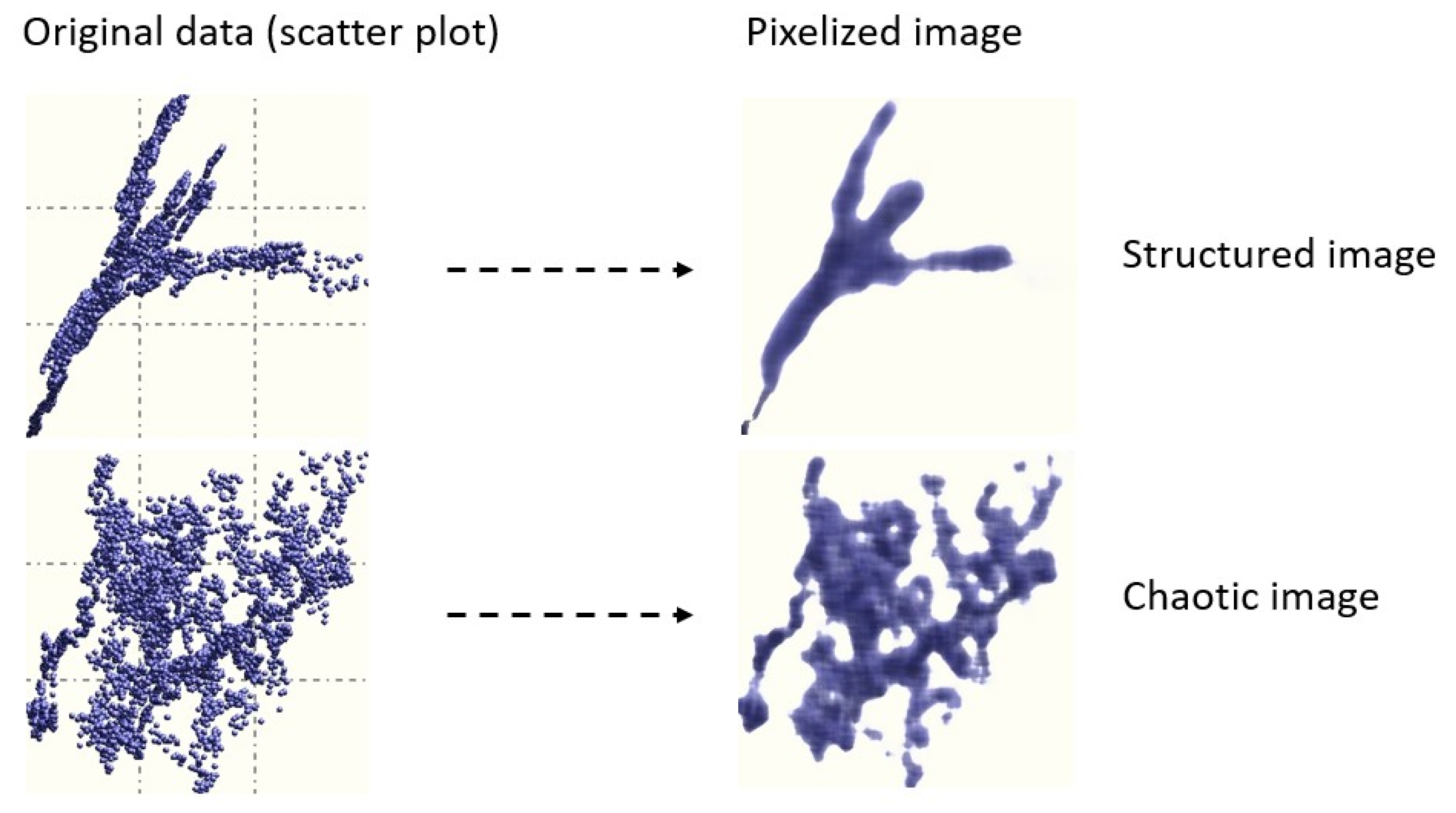
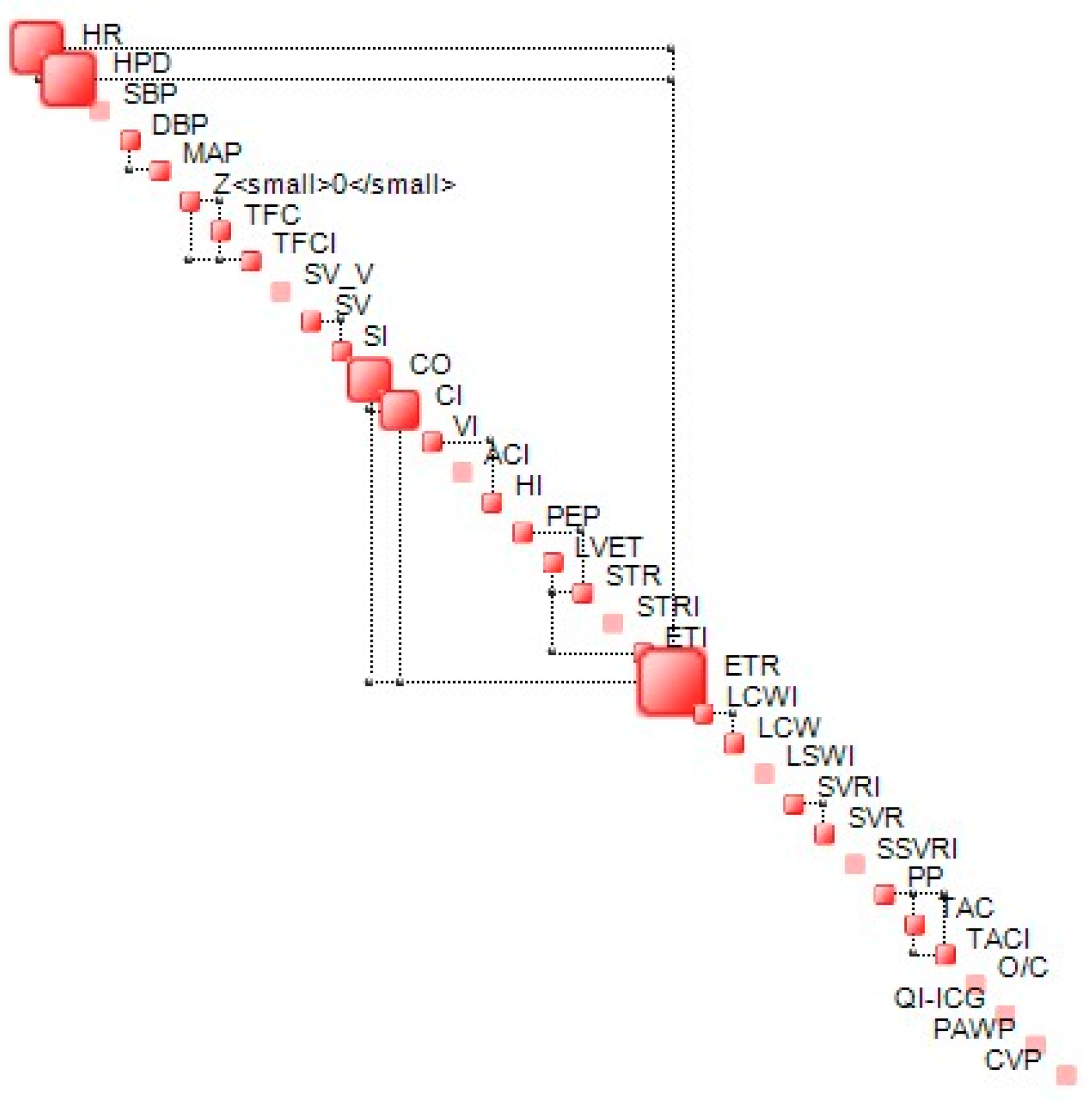
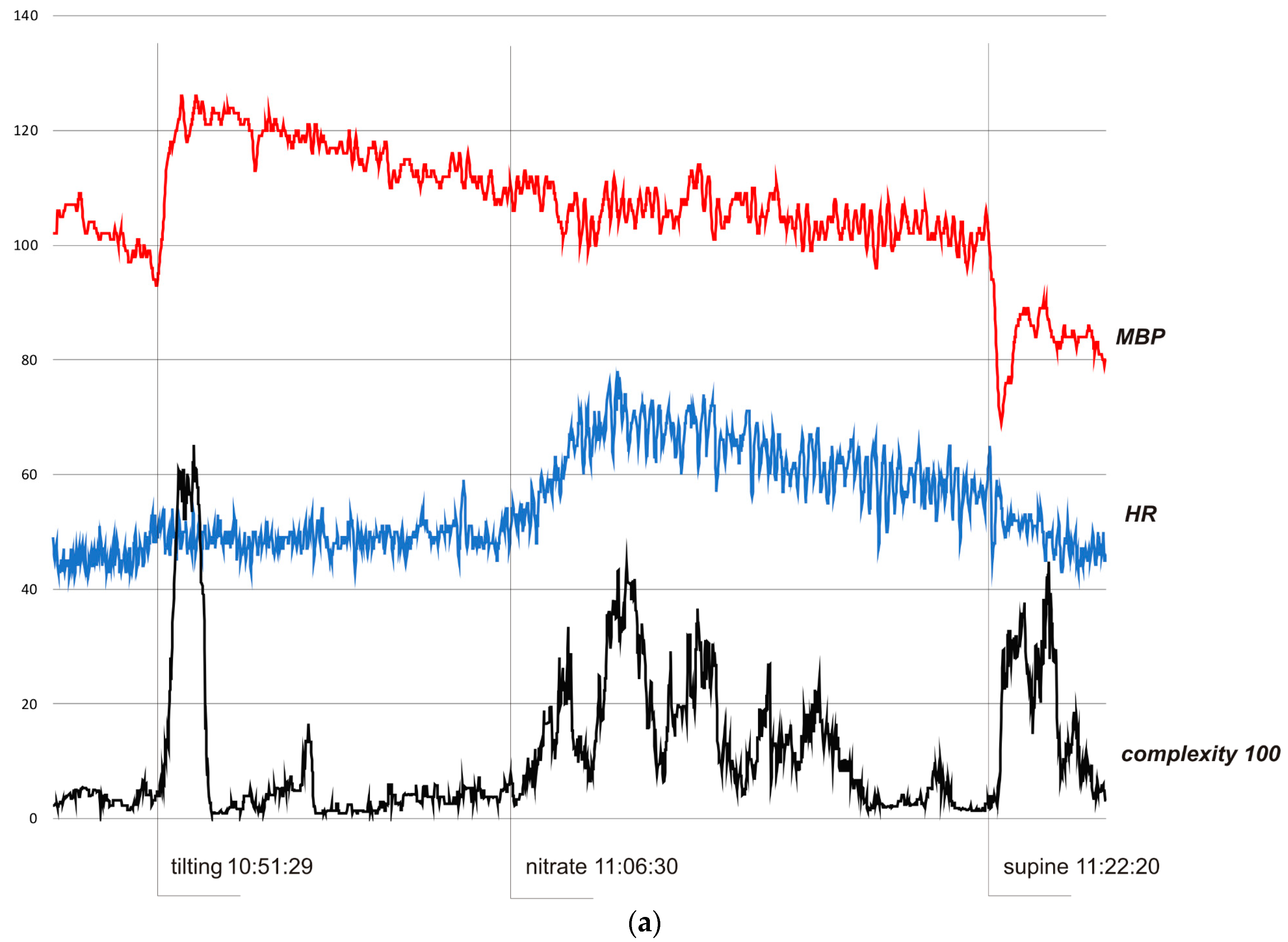
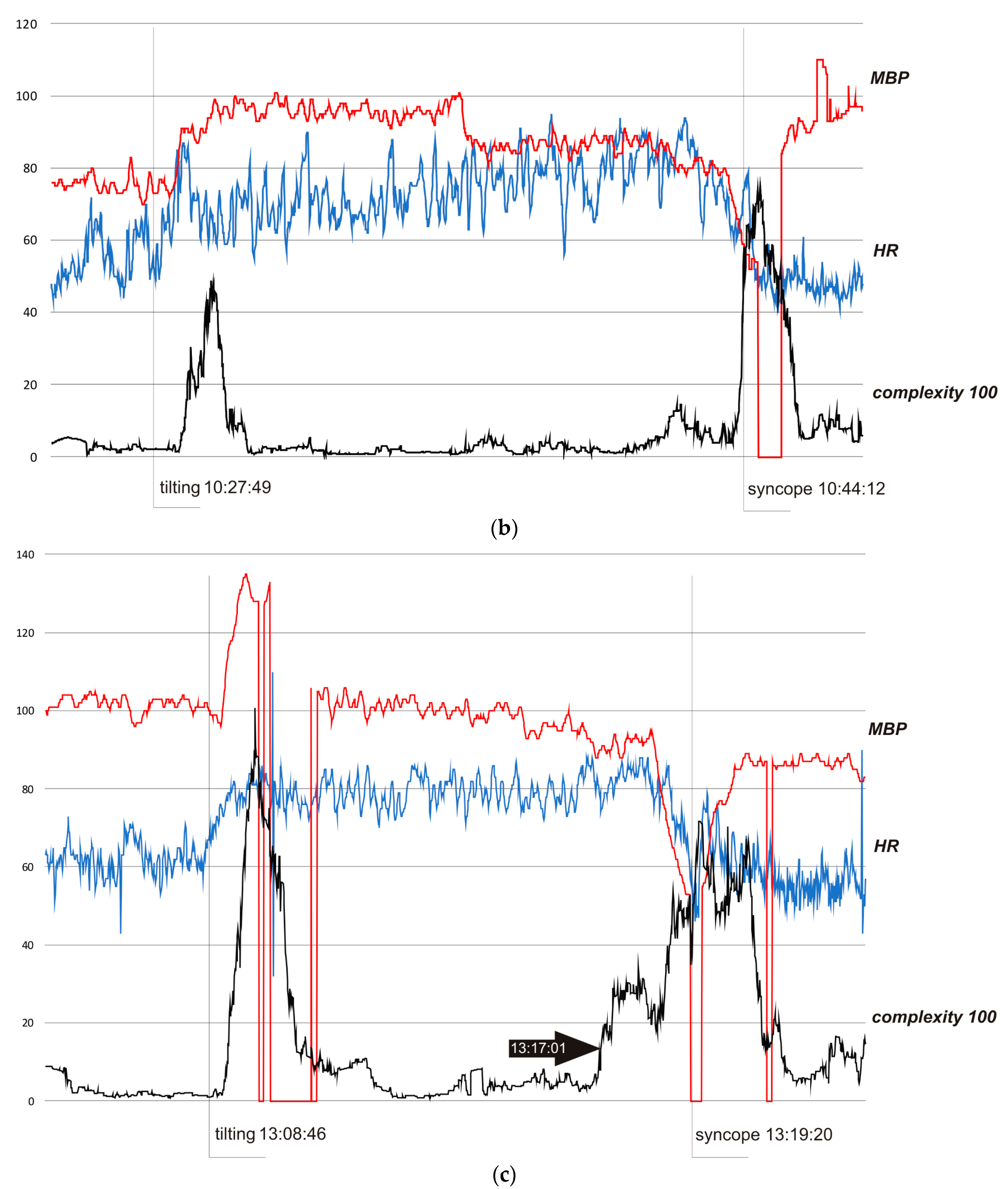
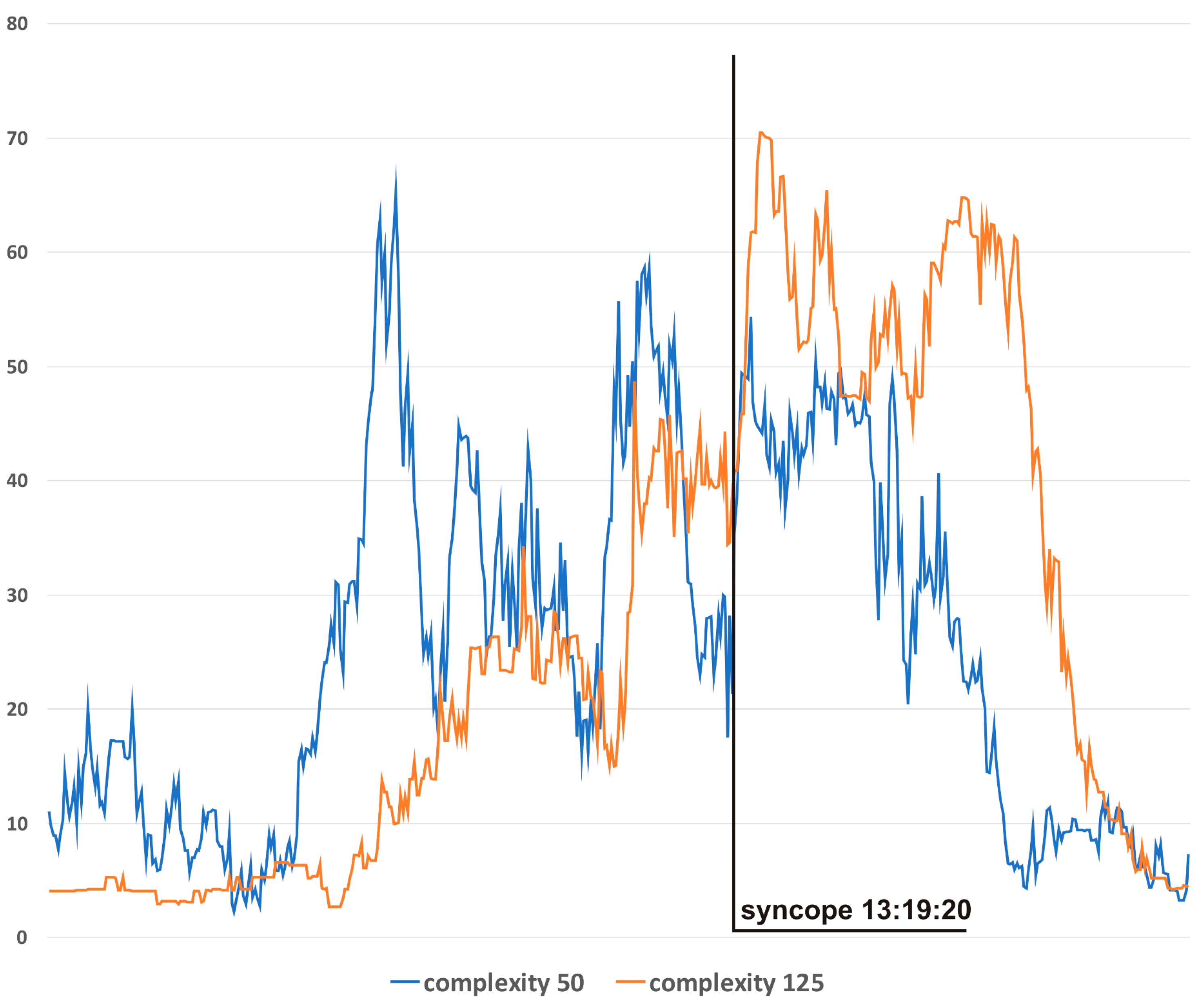
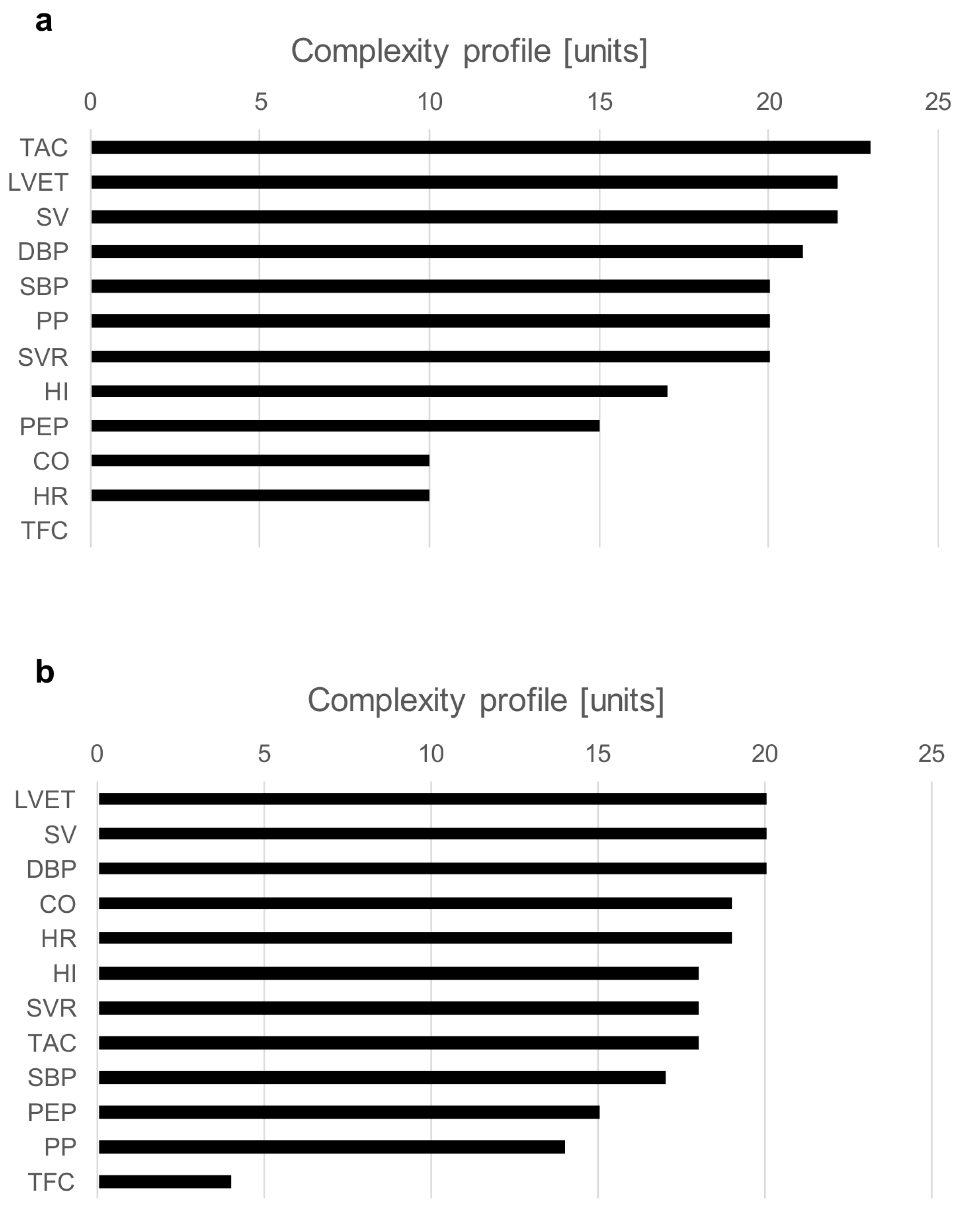
| Parameter | Abbreviation | Comment |
|---|---|---|
| heart rate | HR | - |
| systolic blood pressure | SBP | - |
| diastolic blood pressure | DBP | - |
| mean blood pressure | MBP | - |
| left ventricular ejection time | LVET | - |
| pre-ejection period | PEP | - |
| stroke volume | SV | calculated as SV = VEPT * dZmax * LVET/Z0 VEPT—accounting for weight, height, and sex, Z0—baseline impedance, dZmax—maximum change of impedance (Sramek and Bernstein formula [19]) |
| cardiac output | CO | calculated as CO = SV * HR |
| Heather Index | calculated as HI = dZmax * TRC TRC—the time interval between the R-peak of the electrocardiogram and C-point of impedance wave | |
| total artery compliance | TAC | calculated as TAC = SV / pulse pressure |
| systemic vascular resistance | SVR | SVR = 80 * [MBP—central venous pressure]/CO |
Disclaimer/Publisher’s Note: The statements, opinions and data contained in all publications are solely those of the individual author(s) and contributor(s) and not of MDPI and/or the editor(s). MDPI and/or the editor(s) disclaim responsibility for any injury to people or property resulting from any ideas, methods, instructions or products referred to in the content. |
© 2023 by the authors. Licensee MDPI, Basel, Switzerland. This article is an open access article distributed under the terms and conditions of the Creative Commons Attribution (CC BY) license (https://creativecommons.org/licenses/by/4.0/).
Share and Cite
Krzesiński, P.; Marczyk, J.; Wolszczak, B.; Gielerak, G.G.; Accardi, F. Quantitative Complexity Theory (QCT) in Integrative Analysis of Cardiovascular Hemodynamic Response to Posture Change. Life 2023, 13, 632. https://doi.org/10.3390/life13030632
Krzesiński P, Marczyk J, Wolszczak B, Gielerak GG, Accardi F. Quantitative Complexity Theory (QCT) in Integrative Analysis of Cardiovascular Hemodynamic Response to Posture Change. Life. 2023; 13(3):632. https://doi.org/10.3390/life13030632
Chicago/Turabian StyleKrzesiński, Paweł, Jacek Marczyk, Bartosz Wolszczak, Grzegorz Gerard Gielerak, and Francesco Accardi. 2023. "Quantitative Complexity Theory (QCT) in Integrative Analysis of Cardiovascular Hemodynamic Response to Posture Change" Life 13, no. 3: 632. https://doi.org/10.3390/life13030632
APA StyleKrzesiński, P., Marczyk, J., Wolszczak, B., Gielerak, G. G., & Accardi, F. (2023). Quantitative Complexity Theory (QCT) in Integrative Analysis of Cardiovascular Hemodynamic Response to Posture Change. Life, 13(3), 632. https://doi.org/10.3390/life13030632







